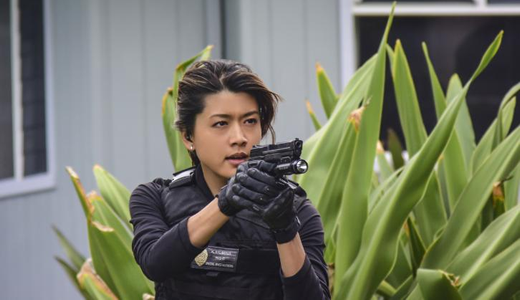Think Hawaii and you probably picture sun, surf and sand, humpback whales and tropical waterfalls. If you’ve watched national news recently, you could add spectacular lava flows and high elevation snowstorms (surprisingly) to that list.
You won’t hear Hawaii’s tourism bureau touting the state’s seedy underbelly. Like most states, Hawaii has a big drug problem. Meth use is rampant. Thugs guard marijuana plants grown on state-owned land. Robbery can be a problem, too: If you visit, hold on to your wallet and definitely don’t leave valuables in your condo/hotel/rental car.
And surprisingly, forcing young girls who’ve been raised in “paradise” to perform sex acts for money is an all-too-common problem as well.
Regarding the latter, let me pause to explain that my family has taken more than just a passing interest in Hawaii’s human trafficking problem. Our daughter, Kelsey, lives there and is a volunteer for Hoʻōla Nā Pua, an organization whose sole purpose is to provide “refuge and renewal for trafficked girls.”
A few weeks back, Kelsey let us know that an episode of Hawaii Five-O would be highlighting Hoʻōla Nā Pua and the good work they do. The episode was even covered by local Hawaiian news, which you can catch here.
The episode, “Puka ‘ana,” focuses on a young girl who winds up in Hawaii’s sex trade after she begins exchanging online conversations with a man she falsely believes “gets” and loves her. Officer Kono Kalakua (played by actress Grace Park), seeks out the girl and wants to bring her pimp to justice. By episode’s end, the girl is freed and, along with a number of other victims of abuse, is sent to recuperate at Hoʻōla Nā Pua’s therapeutic reintegration center, Pearl Haven. [Unlike the TV depiction, Pearl Haven is not yet open; funds are currently being raised to remodel a building that the organization owns.]
Hoʻōla Nā Pua’s team first approached the show’s producers last year with hopes of just getting a public service announcement highlighting Hawaii’s trafficking problem. And while they got their PSAs, the show’s producers decided to do one better and devote an entire episode to the topic. As Hawaii Five-O’s executive producer Bryan Spicer told Hawaii News Now: “I actually prefer these kinds of episodes because it brings meaning to what we do as opposed to making TV for the sake of making TV.”
Park adds, “This kind of thing sat with me for days and weeks and it will sit with me for months and years. This is a very important topic to me.”
Now, I should also pause to say that our TV guru, Paul Asay, hasn’t been Five-0’s biggest fan. In his review, he points out that one of the show’s most glaring problems is how it relishes in the good guys going to blows excessively against the bad guys: “[The police have] a license to kill—or, at the very least, maim—and [state officials] won’t ask a lot of uncomfortable questions,” he writes.
“Puka ‘ana”, which aired in March, has just those sorts of problems, and I’m not going to excuse them. That said, I applaud the show’s producers and cast members for making a concerted effort to include anti-trafficking messaging in “Puka ‘ana” with hopes that it’ll reduce sex slavery and lead to the rescue of more of its victims. In fact, the episode is already having an impact.
I asked Jessica Munoz, the founder of Hoʻōla Nā Pua, if she’s seen the effect of “Puka ‘ana”, and indeed she has.
“A girl who was being abused saw the episode and reached out to us from Philadelphia,” she told me. “We, in turn, connected her with local services right in her area. That alone made this episode worthwhile. But also from an organizational standpoint, having this national exposure has been phenomenal—we’ve received hundreds of inquiries from across the country about the issue in general and the work we’re doing in providing direct services through our mentoring program, educational programs and our family support groups.”
Ah, the power of media! Too often that power is negative. But I’m always jazzed when I find an example of that power being used in a positive way. With nearly 10 million Five-O viewers tuning in for each episode, I would say this is a great example of lighting a candle (perhaps a bonfire!) to help shed some light on a very dark issue. Hats off to Spicer, Park and all those who made this particular episode possible! And hats off to Munoz and all those who volunteer with Hoʻōla Nā Pua for the great work they’re doing!
Oh, and to all television producers: How about seeing how your show can make a positive cultural difference!
[For more info on how you can get involved, go to www.hoolanapua.org.]






Recent Comments